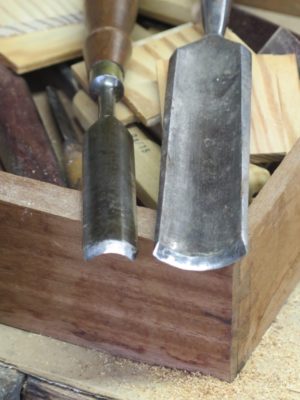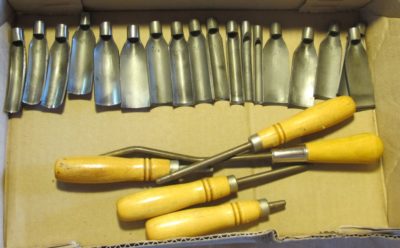Innies and Outies (Cannel, That Is)


During my annual post-New Year’s tool tune up I am finally addressing a topic and a number of edge tools whose bevels are on the wrong side for my particular needs. In the parlance of tool making, the question is often, “Is the bevel (cannel) on the inside of the curved edge or on the outside?” The discussion even extends to edge tools that are not curved, such as plane irons being “bevel up” or “bevel down” or holding chisels while choppings joints.
Same question, different context.

One of my favorite features of the interchangeable-component pattern-makers’ gouges is that the number of in-cannel and out-cannel edges is roughly equivalent. That is because the pattern-makers’ gouges are sculpting tools, not design-inducing tools. The latter is the case when using the profiles and sweeps of carving gouges to lay out the line and profile for most incised or raised detailing, such as foliage or something similar on the knee or leg of a rococo leg. In this instance the inner curve, determined by the size and sweep, combined with the out-cannel provide the replicatable incising lines to establish the outlines of design elements. The complete composition is established by holding the edge of the gouge(s) against the work piece and striking it with a mallet, working around the perimeter until it is complete.
NB-Pattern-makers’ gouges of the type illustrated above are not to be struck with a mallet, they are to be pushed, essentially free-hand.


I’ve got two candidates at the front of the line that reflect my desire to reconfigure the bevel/cannel from one edge to the opposite edge. The first is a carver’s v-gouge and the other a hand-forged petite sculptor’s (?) adz. In both instances I needed/wanted to move the cannel from the outside to the inside. I’ll deal with each tool separately in the blog, beginning with the adz.
Stay tuned.


Join the Conversation!